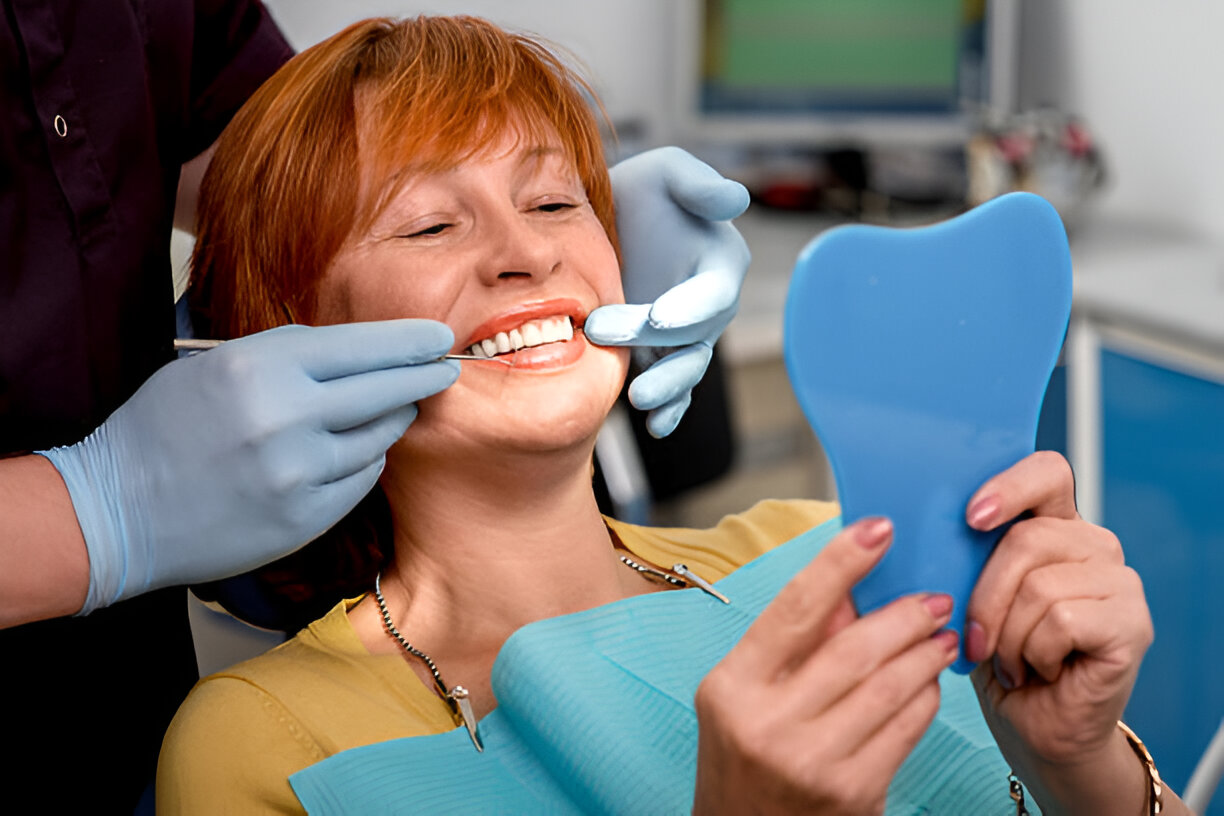Great news, you just got your dental partials done, and they look amazing! Not only are you now on the path for a renewed confidence, but you will also soon notice improvements in your oral hygiene, the way you chew, and even in your speaking. Despite their ample benefits for restoring function and appearance, most of our patients getting them have a common concern: “will I be able to eat normally with my dental partials?”.
Our quick answer: yes—but you need patience and care. For our complete answer, keep on reading and find our best tips and tricks for adjusting your eating habits with your new dental partials.
Best Tips for Eating with Dental Partials
While you will need to wait until your mouth muscles fully adapt to the new appliance, there are several ways to manage the normal, initial discomfort and still enjoy nutritious food. Practice, patience, and gradual progression will be key for your transition.
Best Foods to Eat
Whether you are planning ahead or just figuring out your menu on the spot, you should keep in mind that, at least for the first few weeks, there are certain foods that will make your process easier.
At the beginning, start with soft foods such as yogurt, mashed potatoes or steamed vegetables, soups, oatmeal, smoothies, applesauce, soft cheeses, or pudding. As comfort improves, you can gradually introduce slightly firmer foods like certain fish, shredded chicken, beans, soft berries, pancakes, muffins, etc.
If you want to feel more safe and confident when eating, you can try cutting your food into smaller pieces than normal.
Foods to Avoid
While you should avoid firm foods when adapting to your dental partials, even when you’re totally adapted, there are several foods you must be cautious with, as they could damage, pull, or move the dentures.
When possible, steer clear from eating hard foods like nuts, raw vegetables or hard candies, sticky foods like caramel or gum, and tough meats that require excessive chewing.
Chewing Techniques
During your transition to your dental partials, you will most likely become very aware of your own chewing habits. Take this to your advantage and try to:
- Chew evenly on both sides of your mouth for better pressure distribution
- Use your back teeth, as using the front teeth could lead to dislodging the partials
- Take small bites and don’t rush—take your time eating
Manage Discomfort
You can expect mild soreness when starting to use dental partials. Besides carefully following your dentist’s guidelines, you can also try:
- Taking breaks to rest the gums
- Rinse with warm salt water to manage irritation
- Practice speaking
- Use specialized adhesives
However, if irritation persists, contact your provider and ask for adjustments.
Dental Partials Hygiene
Keeping your teeth clean will always be a must—even when they are removable. You can rinse after meals to remove food particles, but also maintain a daily cleaning routine with a denture brush and either mild soap or, even better, a denture cleaner. Avoid extremely hot water, as it can warp and damage the partials.
Get Your Dental Partials in Houston at Gulfton Smiles
We know how weird it can be to adapt to new dental partials, and how bad it gets when it’s in the way of your favorite foods. However, don’t worry: eating with your partials only gets easier and more comfortable with time.
Make sure to take proper care of them, as well as schedule and attend your checkups for ensuring long-term success.
At Gulfton Smiles, we offer attention for deciding whether or not you need partials, and the best plans for getting your oral health stronger than ever. If you are ready to enjoy a happier and healthier smile, schedule a consultation with our dentistry professionals at Gulfton Smiles in Houston, Texas. You can call (713) 541-3013 or use our online booking tool.

